Can Tea Tree Oil Help Manage Rosacea? How To Use It?
Let the potent properties of this oil help you control your flush and its complications.
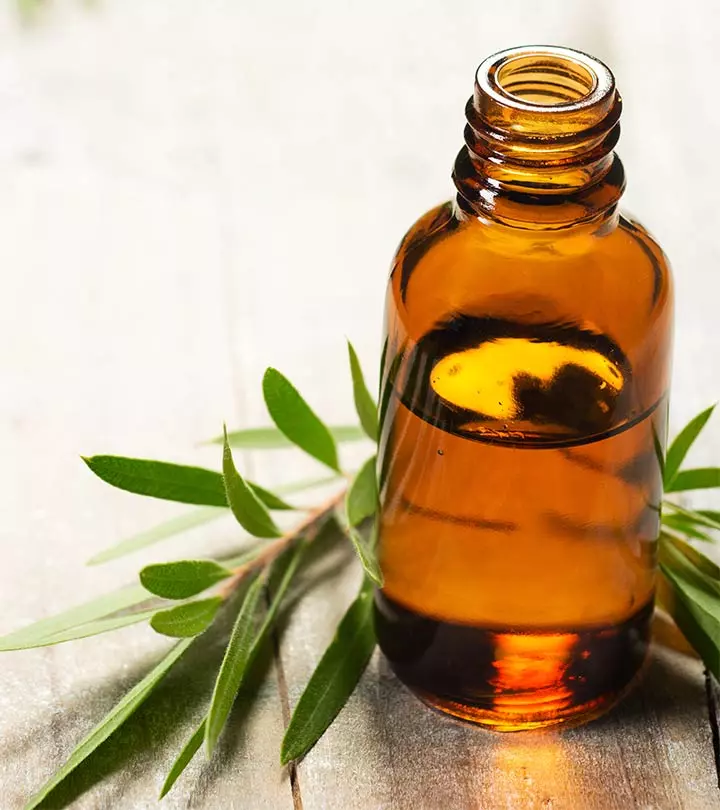
Image: Shutterstock
Tea tree oil has several skin benefits. It is a plant-based oil with great medicinal properties. You can use tea tree oil to manage minor skin issues like allergies, cuts, and rashes. However, many prefer using tea tree oil for rosacea, a condition marked by facial redness, flushing, visible blood vessels, and sometimes acne-like bumps. This article discusses how tea tree oil may help manage rosacea and ways to use it. Keep reading.
In This Article
Rosacea: The Condition And Its Symptoms
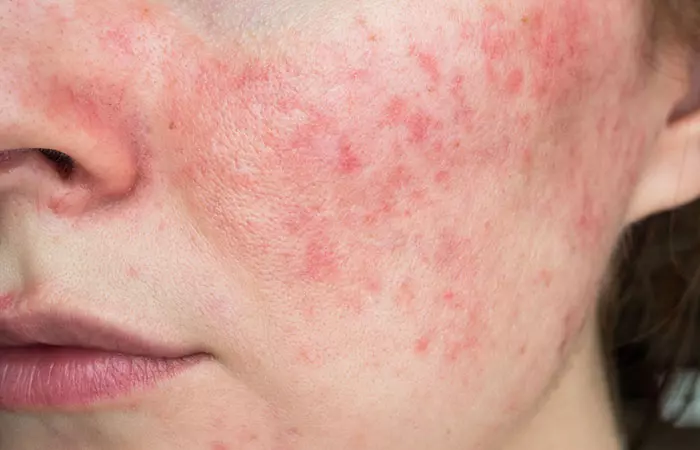
Rosacea is a skin condition that is marked by redness on the skin, especially on the face, usually on the nose and cheeks. It can spread to other parts of the face, including the eyelids. The American Academy of Dermatology Association says that those with the tendency to blush easily are vulnerable to this condition (1).
According to a review, it was found that rosacea affects over 16 million patients in the US. It is even more prevalent in populations with Celtic heritage, like Ireland, where it affects up to 18% of the population. Globally, it’s estimated that over 5% of people have rosacea, and both males and females are affected equally.
It is mainly caused and aggravated by factors that increase the flow of blood to your face. For instance, cosmetics, hot drinks, sun exposure, drugs (that dilate your blood vessels), and emotions may cause blushing. Anyone may develop this condition, but certain factors increase vulnerability, such as:
- Fair skin
- Sun damage
- Age (people who are in their 30s are at risk)
- Smoking
- A family history of rosacea
The symptoms of rosacea include:
This graph from a study published in Dermatology and Therapy shows symptoms of rosacea in 708 eligible respondents who were reported to have had four or more inflamed bumps or pimples. The most common symptoms were flushing (84.0%) and persistent facial erythema in the center of the face (69.1%), while persistent facial redness (69.2%), blushing or flushing (60.9%), and bumps or pimples (53.5%) were found to be the most bothersome.

Rosacea Symptoms
Source: Erythema of Rosacea Affects Health-Related Quality of Life: Results of a Survey Conducted in Collaboration with the National Rosacea Society- Redness around cheeks and nose (a persistent blush)
- Extremely sensitive skin that readily reacts to skincare products and sun exposure
- Swollen red bumps on the face or pimples
- Burning sensation on the face
- Rough and dry skin
- Enlarged pores
- Bulbous nose. This is more common in men than in women. The skin around the nose becomes thick and thus appears bulbous.
- Eye issues, such as irritation in the eyes, swollen eyelids (if the condition gets severe, it may spread to the eyelids as well), and dryness in the eyes.
 Trivia
TriviaThis is not a curable condition, but with proper treatment, you can control the flare-ups. Tea tree oil is a natural remedy that can help manage the condition.
Key Takeaways
- Rosacea is a skin condition that causes facial redness due to increased blood flow.
- Tea tree oil contains terpinen-4-ol that may eliminate and control Demodex mites that may cause rosacea.
- Use tea tree oil in combination with coconut oil, lavender oil, olive oil, or honey to manage rosacea.
- Mix tea tree oil with a moisturizer to eliminate mites and moisturize the skin.
- Tea tree oil is meant for topical application and must always be diluted before using it on the skin.
Is Tea Tree Oil Good For Rosacea?

Yes, because it helps control and eliminates Demodex mites (2).
Demodex is a genus of mites that live in our skin. There are two species, namely Demodex folliculorum (that lives in hair follicles), and Demodex brevis (that lives in our sebaceous glands). Demodex folliculorum is usually found in large numbers on the skin of people suffering from rosacea.
Another study found that tea tree oil contains terpinen-4-ol, an ingredient that can kill Demodex mites (3).
A study evaluated the efficacy of permethrin 2.5% along with tea tree oil gel on rosacea. The researchers found that the topical gel reduced the number of Demodex mites significantly and inhibited the inflammation caused by rosacea (4).
Dalen, a YouTuber, shares a skin care tip for managing rosacea. The tip involves using a rollerball with a mixture of jojoba oil and tea tree oil to combat skin mites on the face, which are believed to contribute to rosacea symptoms. Of her own experience of the mixture, she states, “I do it twice a day, I do it morning and night. I wear it under my makeup, it’s really made a big difference in my skin (i).”
There hasn’t been much research on the effectiveness of tea tree oil in controlling rosacea (caused by any reason other than excess Demodex activity). Still, it has helped treat similar skin issues.
 Quick Tip
Quick TipWondering how you can use tea tree oil for rosacea? Here are some easy recipes that you can try at home. Remember to do a patch test before using tea tree oil to check if you are allergic. Rosacea is a chronic inflammatory condition, so consult a dermatologist before using tea tree oil or any other home remedies for rosacea.
How To Use Tea Tree Oil For Rosacea – 12 Natural Treatments
1. Tea Tree Oil Wipes

You Will Need
- ½ cup distilled water
- 5 drops tea tree oil
- 1 tablespoon calendula oil
- ¼ cup aloe vera gel
- Cotton pads
What You Have To Do
- Mix all the ingredients and store in a glass jar.
- Take a cotton pad and pour some of the mixture on it.
- Wipe your entire face or just the affected area with it.
Why This Works
Tea tree oil is anti-inflammatory. It calms down the inflammation and promotes healing (5).
2. Tea Tree Oil And Coconut Oil Night Cream
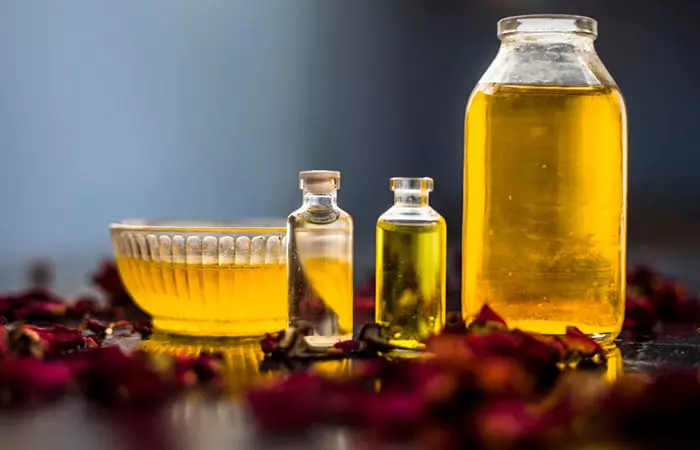
You Will Need
- 1 cup unrefined coconut oil (do not melt the coconut oil)
- 8-10 drops tea tree oil
What You Have To Do
- Add the tea tree oil to the coconut oil.
- Mix well and store in a jar.
- Apply it to the affected area and leave it on overnight.
- Wash it off the next morning.
Why This Works
Like tea tree oil, coconut oil also has anti-inflammatory properties (6). It moisturizes the skin and soothes irritation.
3. Tea Tree And Lavender Essential Oils
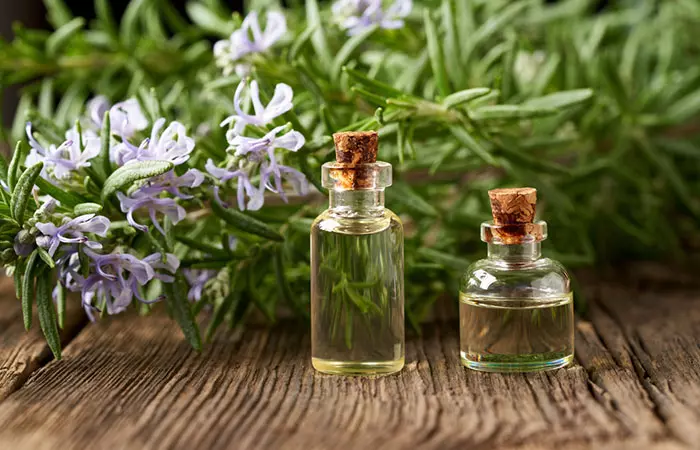
You Will Need
- 8 drops of tea tree oil
- 8 drops of lavender oil
- ½ cup jojoba oil
What You Have To Do
- Pour the jojoba oil in a glass bottle.
- Add the essential oils to it and mix well.
- Apply the blend to your face and the affected area with your fingers.
- Massage well.
- Leave it on for 30 minutes before washing off. You can also leave it on overnight and wash it off the next day.
Why This Works
Both tea tree oil and lavender oil have antibacterial properties (3), (7). Lavender oil is extremely gentle on the skin. This remedy helps soothe the skin and moisturize it without causing further irritation.
4. Tea Tree Oil And Olive Oil Face Cream
You Will Need
- 1 tablespoon olive oil
- 1 tablespoon rose water
- ½ tablespoon hazelnut oil
- ¾ tablespoons shea butter
- 2 tablespoons beeswax
- 40 drops tea tree essential oil
What You Have To Do
- Simmer water in a pot.
- Pour all the ingredients (except the essential oil) in a glass and then place the glass in the simmering water.
- Let the wax and other ingredients melt and mix.
- Once it becomes creamy, remove from the heat and whisk for 5 minutes until it thickens.
- Add the essential oil and store it in a container.
- Apply it to the affected area or use it as a cream.
Why This Works
Shea butter has anti-inflammatory properties (8). Thus, it can reduce the irritation and redness caused by rosacea. Rosewater and beeswax soothe the skin (9).
5. Tea Tree Oil And Honey Face Mask
You Will Need
- 1 tablespoon honey
- 2 drops tea tree oil
What You Have To Do
- Mix the two ingredients well and apply the mixture to the entire face or just the affected area.
- Keep it on for 20 minutes and then wash it off.
Why This Works
Honey has antibacterial properties (10). Both tea tree oil and honey ease irritation, kill bacteria and soothe itchiness and rashes.
6. Tea Tree Oil And Apple Cider Vinegar
You Will Need
- 4 drops tea tree oil
- 1 tablespoon apple cider vinegar
- 100 grams aloe vera gel
- 2 drops castor oil
- 2 drops rose geranium oil
What You Have To Do
- Mix all the ingredients in a container.
- Apply all over the face or just on the affected area.
- Leave it on for 20 minutes and then wash off.
Why This Works
Apple cider vinegar is said to help maintain the pH balance of the skin, though there is no scientific proof of the same. Rose geranium oil has anti-inflammatory properties that can help in soothing skin irritation (11).
7. Tea Tree Oil And Almond Oil
You Will Need
- 1 tablespoon almond oil
- 2-3 drops tea tree oil
What You Have To Do
- Blend the two oils and massage gently on the affected area.
- Allow the skin to absorb the blend for at least 30 minutes, then wash off.
Why This Works
Almond oil is said to have anti-inflammatory properties. It can also moisturize the skin (12). Therefore, it may help in reducing a rosacea flare-up.
8. Tea Tree Oil And Jojoba Oil
You Will Need
- 1 tablespoon jojoba oil
- 2-3 drops tea tree oil
- 2 drops argan oil
What You Have To Do
- Mix all the oils and apply the blend to the affected area.
- Massage it on your face and leave it on for half an hour.
- Wash it off.
Why This Works
Jojoba oil has a proven anti-inflammatory effect, and argan oil can soften and relax the skin (8). Thus, in combination with tea tree oil, these oils may help in the treatment of a rosacea flare-up.
9. Tea Tree Oil And Oatmeal
You Will Need
- ¼ cup oatmeal
- ¾ cup of coconut oil (unrefined)
- 1 tablespoon olive oil
- 3 drops tea tree oil
What You Have To Do
- Grind the oatmeal finely and add the coconut oil to it.
- If the coconut oil is too solid, melt it a bit.
- Add the other oils and mix well.
- Apply the mixture to the affected area and leave it on until it dries, and your skin completely absorbs the oil.
- Wash it off.
Why This Works
This mixture of oils and oatmeal has anti-inflammatory benefits (8), (13). It helps in reducing the inflammation and redness caused by rosacea.
10. Tea Tree Oil Moisturizer
You Will Need
- Your favorite moisturizer
- 2-3 drops tea tree oil (per 30 ml of moisturizer)
What You Have To Do
- Mix the tea tree oil in your favorite moisturizer.
- Wash your face and pat it dry.
- Apply the moisturizer to your face and massage.
Why This Works
This mixture helps in eliminating the mites causing rosacea and moisturizing your skin (4).
11. Castor Oil And Tea Tree Oil
You Will Need
- 1 tablespoon castor oil
- 2-3 drops of tea tree oil
- Clean washcloth
What You Have To Do
- Mix both the oils and gently massage on the affected area for 3 minutes.
- Run the washcloth under warm water and wring out excess water. (Check the temperature of the washcloth. It should not feel too hot on the skin)
- Place the cloth over the affected area. This helps your skin absorb the oil.
- Repeat the steaming process once again. Do not wipe the oil off. Leave it on for a few minutes.
- Wash your face and pat it dry.
Why This Works
Castor oil works as an excellent skin-conditioning agent (14). Thus, it may help soothe the skin and relieve any discomfort caused by rosacea.
12. Tea Tree Oil Steam Treatment
You Will Need
- 2-3 drops of tea tree oil
- A bowl of hot water
- Clean towel
What You Have To Do
- Bring a bowl of water to a boil and let it cool slightly.
- Add a few drops of tea tree oil to the hot water.
- Place your face at a safe distance from the bowl to avoid burning yourself.
- Cover your head with a towel to trap the steam.
- Close your eyes and steam your face for about 10-15 minutes, or until the water cools down.
- Gently pat your face dry with a clean towel.
Why This Works
The hot steam helps open the pores and allows the tea tree oil to penetrate the skin. Its anti-inflammatory properties may help soothe the inflammation caused by rosacea (5).
Let us make one thing clear: do not expect tea tree oil to cure rosacea. This condition is not curable, and you can only control the flare-ups. Also, before using anything on your skin, consult a doctor.
Using essential oils on your skin can be a bit tricky. They work wonders for some and may not work at all for others. So, before you apply tea tree oil to your skin, consider these points.
Things To Consider Before Using Tea Tree Oil On Your Skin
- If you have sensitive skin, find out some other alternative as tea tree oil may cause skin irritation. If you experience a burning sensation or it hurts at the site of application, wash it off immediately.
- In case you are taking any oral medication or using any ointment for treating your condition, consult the dermatologist before applying tea tree oil, as you cannot use certain topical medicines along with tea tree oil.
- Always dilute the tea tree oil with a carrier oil or another ingredient. Do not use it directly on your face.
- Never swallow tea tree oil. It is meant for topical application and not for consumption.
Infographic: Best Ways To Use Tea Tree Oil For Rosacea
Looking for the best natural remedy for rosacea? Tea tree oil might be the answer. This potent plant elixir offers several skin care advantages, many of which might relieve rosacea symptoms like inflammation and redness. The infographic below suggests ways to use tea tree oil to treat rosacea.
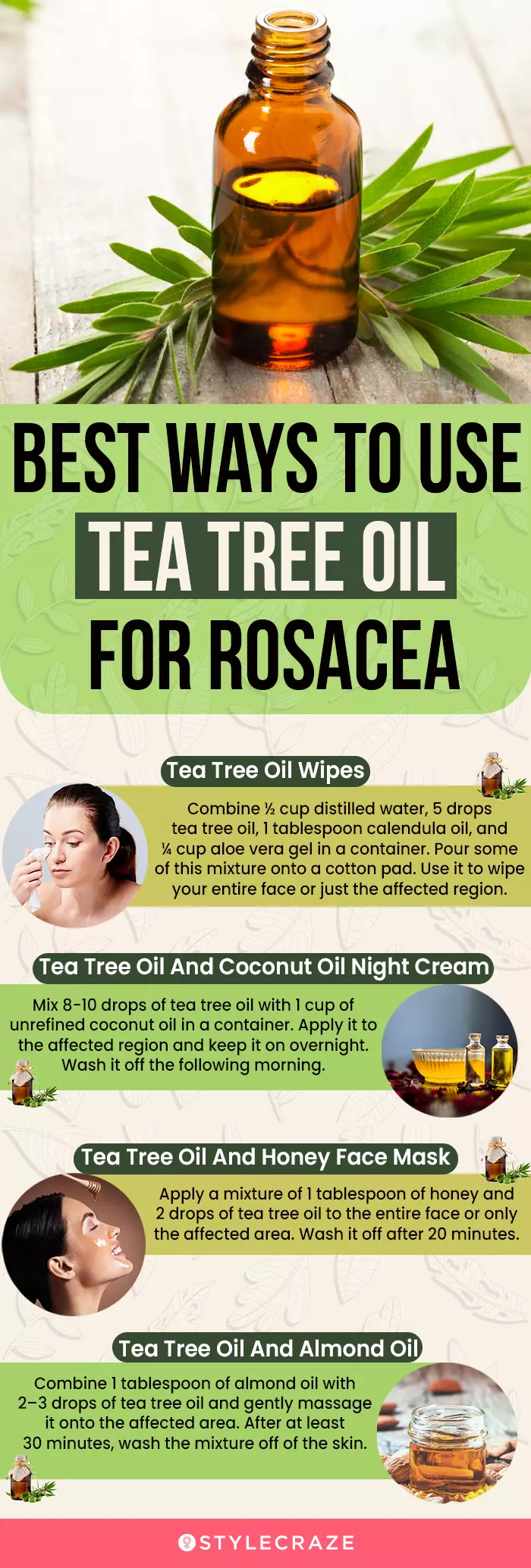
Illustration: StyleCraze Design Team
Tea tree oil benefits are extensive, especially for calming the skin due to its antiseptic properties. It is used to treat rashes, allergies, and cuts. Many individuals who prefer natural treatments also use tea tree oil for rosacea. Rosacea is a skin condition caused by Demodex mites which results in symptoms such as redness on the cheeks and nose, swollen red pimples, and enlarged pores. Studies suggest that terpinen-4-ol, an ingredient found in tea tree oil, may be effective in reducing inflammation and killing the Demodex mites. You can use tea tree oil wipes or mix them with olive oil or coconut oil to use as a night cream. However, do not apply tea tree oil directly to your skin as a toner or astringent, as it may cause burning and skin irritation.
Frequently Asked Questions
How to dilute tea tree oil for rosacea?
Mix 2-3 drops of tea tree oil with a tablespoon of any carrier oil to dilute it.
What is the best carrier oil to mix with tea tree oil for rosacea?
Olive, jojoba, castor, sweet almond, and coconut oils are some good carrier oils to mix with tea tree oil for rosacea.
What can you not mix with tea tree oil?
Tea tree oil generally mixes well with skincare ingredients. However, it is not recommended to mix tea tree oil with retinoids, benzoyl peroxide, and other acne-fighting ingredients as it may irritate your skin.
Can you reverse rosacea?
Rosacea can’t be cured. However, you can manage its symptoms and prevent flare-ups by making lifestyle and dietary changes like consuming more prebiotics, probiotics, and fiber-rich foods (16). Also, try to reduce stress, as it is a common trigger for rosacea flare-ups (17). You may also limit the intake of alcohol and exclude spicy and histamine-rich foods from meals.
Illustration: Effective Ways To Use Tea Tree Oil For Rosacea
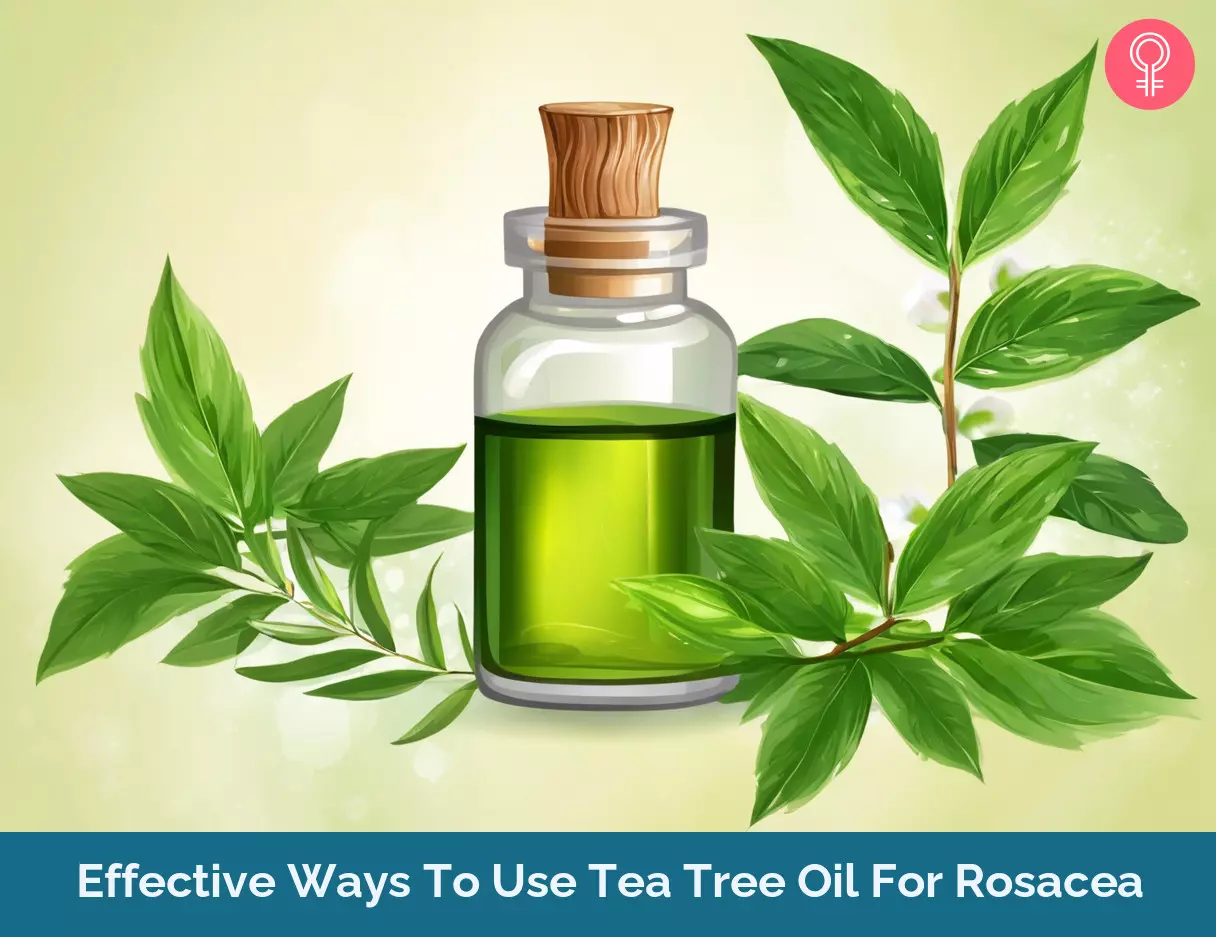
Image: Stable Diffusion/StyleCraze Design Team
Personal Experience: Source
StyleCraze's articles are interwoven with authentic personal narratives that provide depth and resonance to our content. Below are the sources of the personal accounts referenced in this article.
i. My #1 Tip for ROSACEA!https://www.youtube.com/watch?v=vZEXj4f0iyk
References
Articles on StyleCraze are backed by verified information from peer-reviewed and academic research papers, reputed organizations, research institutions, and medical associations to ensure accuracy and relevance. Read our editorial policy to learn more.
- WHAT IS ROSACEA?
https://www.aad.org/public/diseases/rosacea/what-is - Ocular Surface Discomfort and Demodex: Effect of Tea Tree Oil Eyelid Scrub in Demodex Blepharitis, Journal of Korean Medical Science, US National Library of Medicine, National Institutes of Health.
https://www.ncbi.nlm.nih.gov/pmc/articles/PMC3524441/ - Terpinen-4-ol is the Most Active Ingredient of Tea Tree Oil to Kill DemodexMites, Translational Vision Science & Technology, US National Library of Medicine, National Institutes of Health.
https://www.ncbi.nlm.nih.gov/pmc/articles/PMC3860352/ - The efficacy and safety of permethrin 2.5% with tea tree oil gel on rosacea treatment: A double-blind, controlled clinical trial, Journal of Cosmetic Dermatology, US National Library of Medicine, National Institutes of Health.
https://www.ncbi.nlm.nih.gov/pmc/articles/PMC3860352/ - Melaleuca alternifolia (Tea Tree) Oil: a Review of Antimicrobial and Other Medicinal Properties, Clinical Microbiology Reviews, US National Library of Medicine, National Institutes of Health.
https://www.ncbi.nlm.nih.gov/pmc/articles/PMC1360273/ - In vitro anti-inflammatory and skin protective properties of Virgin coconut oil, Journal of Traditional and Complementary Medicine, ScienceDirect. https://www.sciencedirect.com/science/article/pii/S2225411017300871
- Antibacterial activity of essential oil from lavender (Lavandula angustifolia) against pet turtle-borne pathogenic bacteria, Laboratory Animal Research, US National Library of Medicine, National Institutes of Health.
https://www.ncbi.nlm.nih.gov/pmc/articles/PMC5645596/ - Anti-Inflammatory and Skin Barrier Repair Effects of Topical Application of Some Plant Oils, International Journal of Molecular Sciences, US National Library of Medicine, National Institutes of Health.
https://www.ncbi.nlm.nih.gov/pmc/articles/PMC5796020/ - Evaluation of the Performance of a Nature-Based Sensitive Skin Regimen in Subjects With Clinically Diagnosed Sensitive Skin, JDD Online.
https://jddonline.com/articles/dermatology/S1545961618P0908X - Honey: its medicinal property and antibacterial activity, Asian Pacific Journal of Tropical Biomedicine, US National Library of Medicine, National Institutes of Health.
https://www.ncbi.nlm.nih.gov/pmc/articles/PMC3609166/ - Rose geranium essential oil as a source of new and safe anti-inflammatory drugs., The Libyan Journal of Medicine, US National Library of Medicine, National Institutes of Health.
https://pubmed.ncbi.nlm.nih.gov/24103319/ - The uses and properties of almond oil, Complementary Therapies in Clinical Practice, US National Library of Medicine, National Institutes of Health.
https://pubmed.ncbi.nlm.nih.gov/20129403/ - Colloidal oatmeal: history, chemistry and clinical properties., Journal of Drugs in Dermatology, US National Library of Medicine, National Institutes of Health.
https://pubmed.ncbi.nlm.nih.gov/17373175/ - Final report on the safety assessment of Ricinus Communis (Castor) Seed Oil, Hydrogenated Castor Oil, Glyceryl Ricinoleate, Glyceryl Ricinoleate SE, Ricinoleic Acid, Potassium Ricinoleate, Sodium Ricinoleate, Zinc Ricinoleate, Cetyl Ricinoleate, Ethyl Ricinoleate, Glycol Ricinoleate, Isopropyl Ricinoleate, Methyl Ricinoleate, and Octyldodecyl Ricinoleate., US National Library of Medicine, National Institutes of Health.
https://pubmed.ncbi.nlm.nih.gov/18080873/ - Incidence and prevalence of rosacea: a systematic review and meta-analysis
https://pubmed.ncbi.nlm.nih.gov/29478264/ - Diet and rosacea: the role of dietary change in the management of rosacea
https://pmc.ncbi.nlm.nih.gov/articles/PMC5718124/ - Overview: Rosacea
https://www.ncbi.nlm.nih.gov/books/NBK279476/
Discover how to effectively reduce redness and irritation from rosacea with these powerful essential oils. Reclaim your healthy, glowing skin by watching the video below.
Read full bio of Dr. Vindhya L Veerula
Read full bio of Ramona Sinha
Read full bio of Anjali Sayee
Read full bio of Shiboli Chakraborti








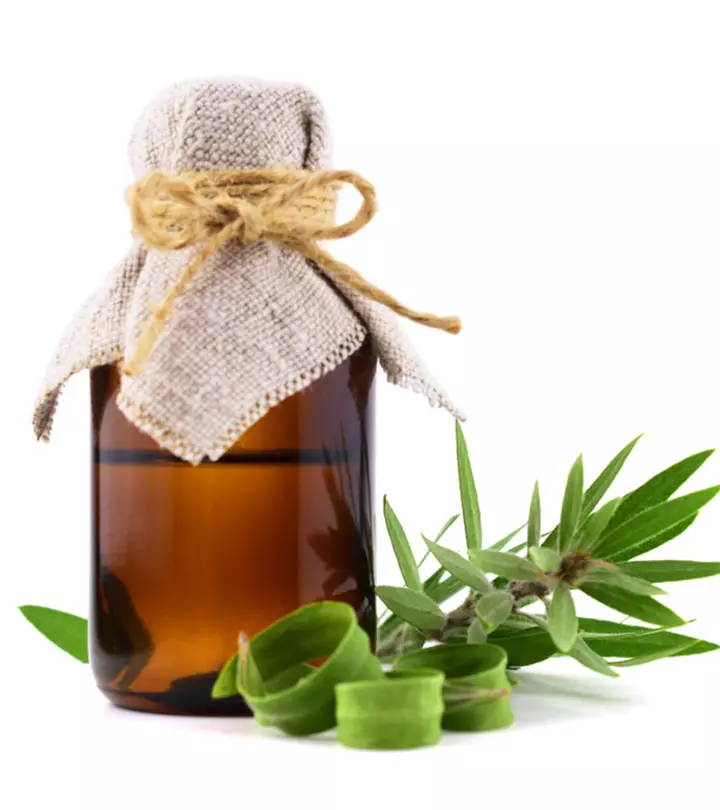

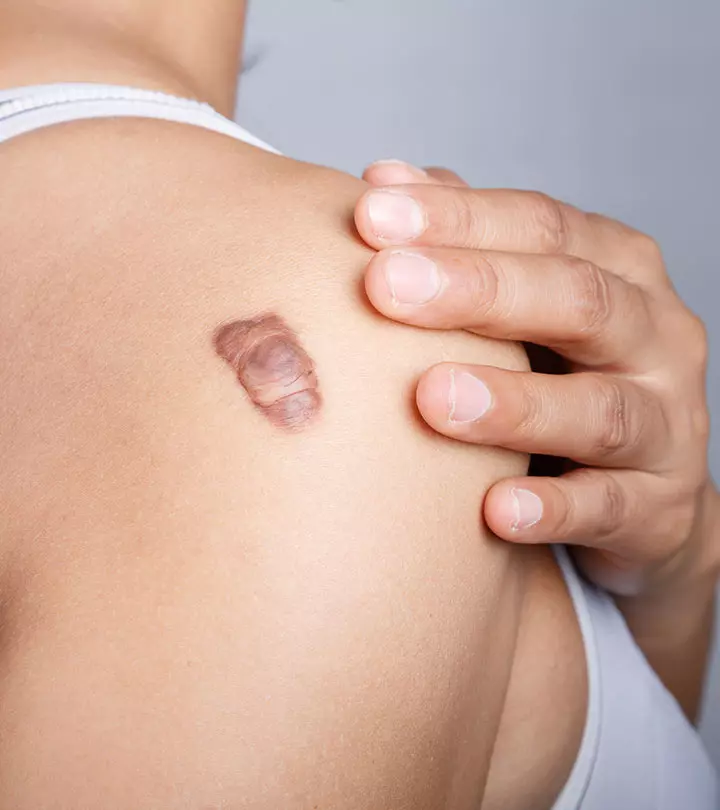
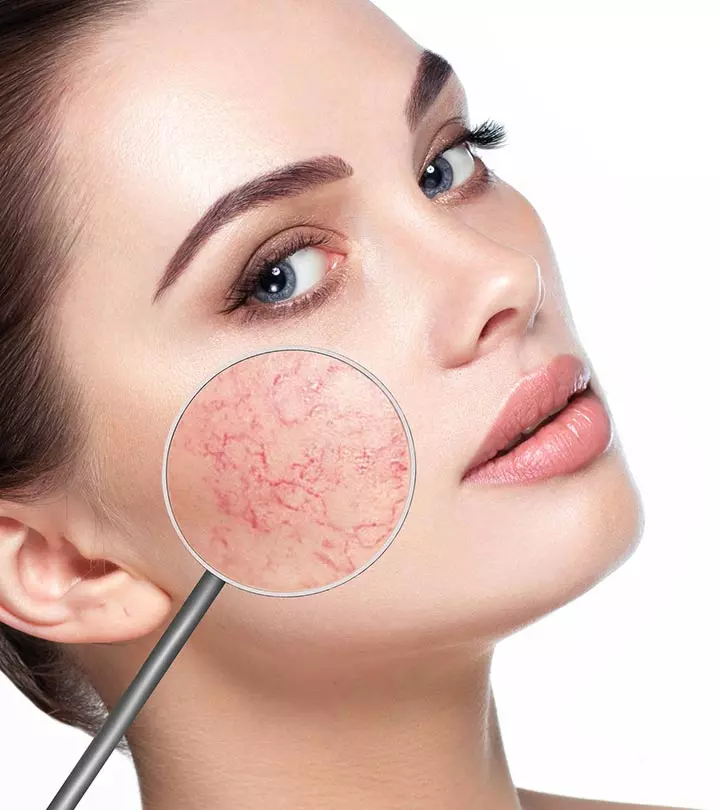

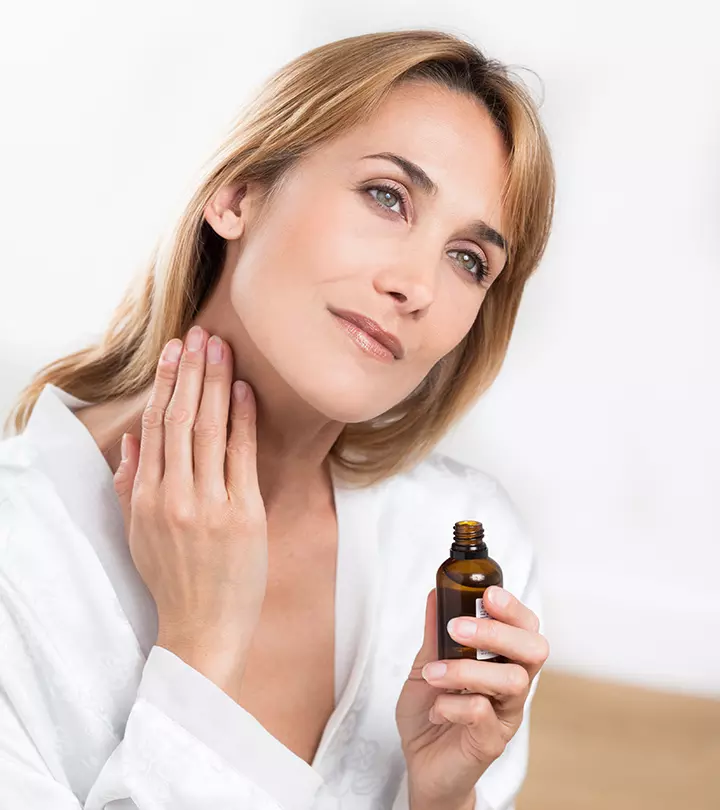
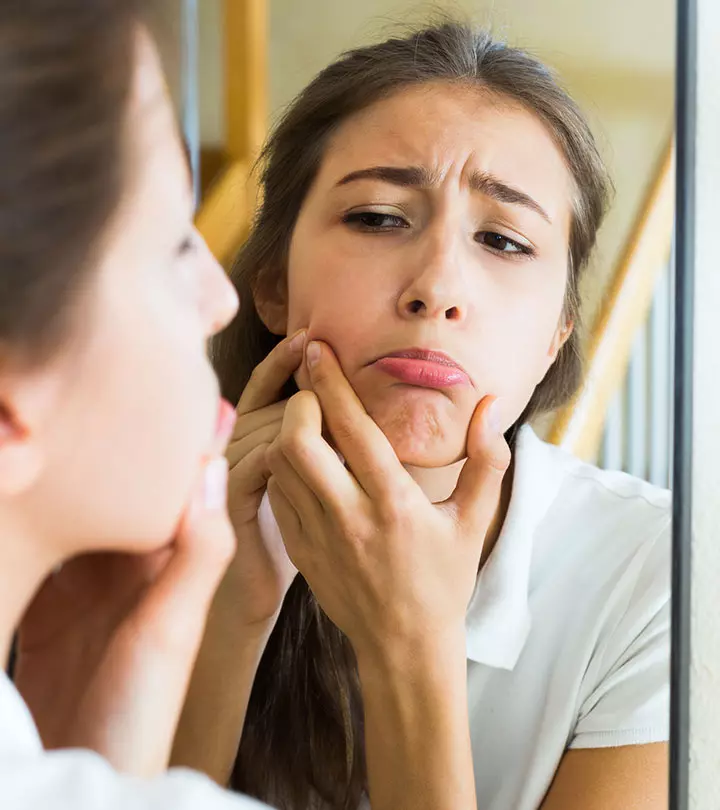

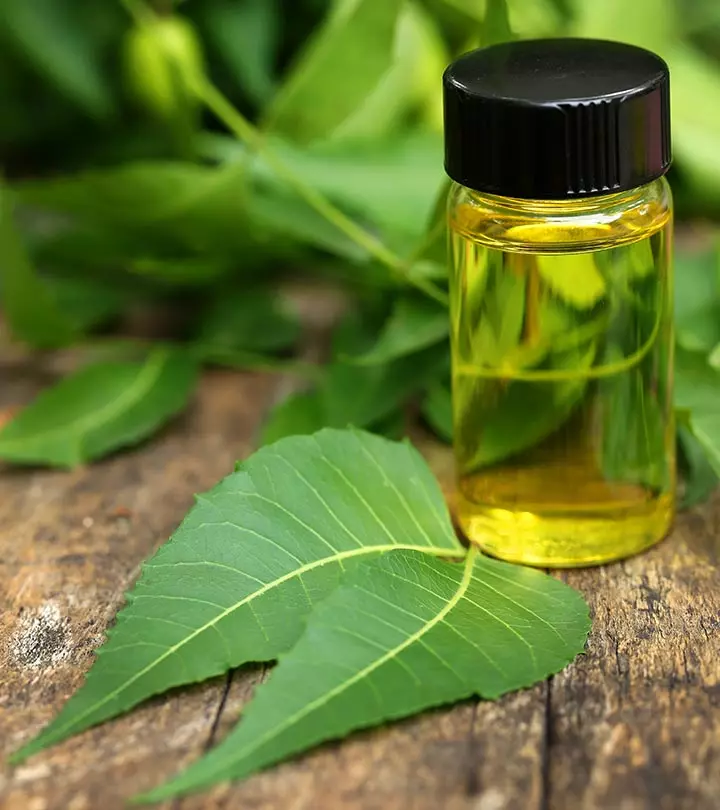







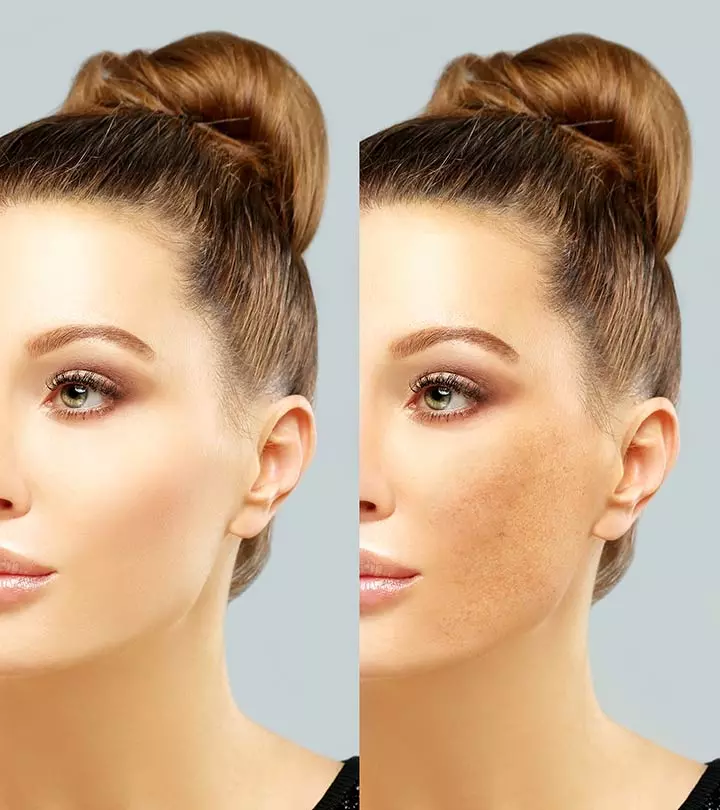
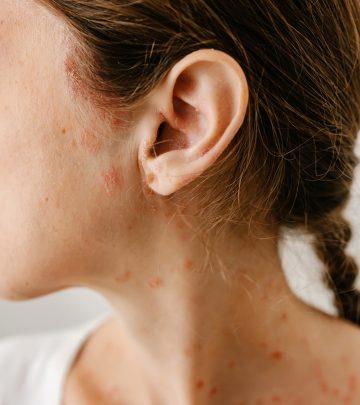
Community Experiences
Join the conversation and become a part of our empowering community! Share your stories, experiences, and insights to connect with other beauty, lifestyle, and health enthusiasts.